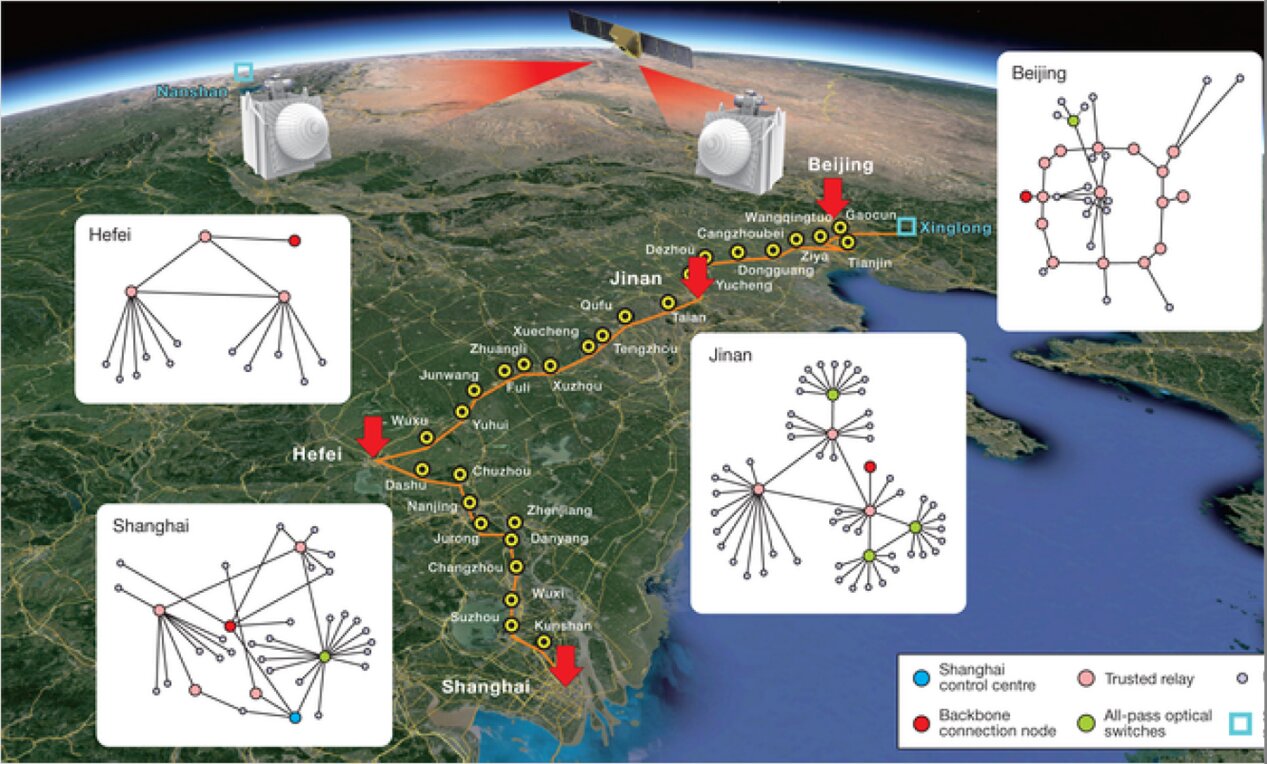At a time when the entire media attention is focused on the Ukraine crisis, India’s Defence Research and Development Organisation (DRDO) has quietly achieved a breakthrough in quantum communications. This breakthrough comes approximately four months after China announced a major achievement in another form of this technology.
On February 23, a team of scientists from DRDO and IIT Delhi successfully demonstrated the Quantum Key Distribution (QKD) link between Prayagraj and Vindhyachal in the northern Indian state of Uttar Pradesh, a distance of more than 100 kilometers.
This secure key transfer was demonstrated over a commercial-grade optical fiber already available in the field. “The performance parameters measured were found to be repetitively within the reported international standards at sifted key rates of up to 10 KHz,” the Ministry of Defence said in a press release.
“With this success, the country has demonstrated indigenous technology of secure key transfer for bootstrapping military-grade communication security key hierarchy. This technology will enable security agencies to plan a suitable quantum communication network with indigenous technology backbone,” MOD added.
QKD is a secure communications technology that enables two parties to share random secret keys that are known only to them and can be used to encrypt or decrypt messages.
A remarkable feature of QKD is that if a third party tries to eavesdrop on this communication link, it will create detectable anomalies for the two communicating sides. To eavesdrop on the key means that the key has to be measured in some way and the measuring of a quantum system generates disturbances in it.
A secure key can only be generated if the eavesdropping is below a certain threshold, otherwise, the communication is aborted, thus achieving a very highly secure communication.

In December 2020, a similar demonstration was held between two DRDO facilities in Hyderabad—the Defence Research and Development Laboratory (DRDL) and Research Centre Imarat (RCI) – over a much shorter distance of 12 kilometers.
Later in the same month, DRDO Young Scientists Laboratory developed a Quantum Random Number Generation (QRNG) which “detects random quantum events and converts those into a stream of binary digits”. Random numbers have important roles in many fields, such as Quantum Communication, cryptography (key generation, key wrapping, authentication etc.), scientific simulations, lotteries and fundamental physics experiments, MOD said in a previous release.
Of late, major economies and defense powers across the world are engaged in a global quantum race as this technology holds enormous significance from a geopolitical point of view.
Quantum networks can potentially enable un-hackable communications and in the future, powerful quantum computers that can perform highly complex calculations could theoretically crack much of the encryptions used to secure e-mails and Internet transactions.
China Leading The Race?
Among the countries that have formulated ambitious plans and allocated huge resources for the development of quantum tech are, the US, Canada, several European countries, China, Japan and South Korea.
However, senior DRDO scientists and defense officials say that progress in India needs to be seen particularly in the context of several claims made by China.
“My concern is China leading the race. It established the first Quantum Satellite Network and distributed entangled photons between three terrestrial base stations separated by 1200 km. Quantum is at the heart of China’s 13th five-year plan.
Chinese dominated in Quantum Computing patents in the last four years. As if this was not enough, the global investments in quantum computing are also growing”, said India’s National Cyber Security Coordinator, Lieutenant General Rajesh Pant in an International Symposium on Quantum Information Technology held in Pune in 2019.

In September 2021, Chinese state media claimed that researchers from Shanghai Jiaotong University and Jiangxi Normal University achieved “a crucial breakthrough” with the construction of a 15-user quantum secure direct communication (QSDC) network.
QSDC is another form of quantum-based communication technology which can be used to directly transmit information over a secure quantum channel, much different from the QKD that can only be used to share keys for encryption.
In the last week of January 2022, a team of scientists from the University of Science and Technology of China led by associate professor Zhou Zongquan claimed that they have developed a quantum computer that has a memory that can store and update quantum information as a calculation is proceeding, unlike the existing ones that forget a calculation as soon as it is done.
The Chinese scientists said that this breakthrough had brought them a step closer to developing a code-breaking machine.
The technological developments in this field are currently in nascent stages, meaning they have no known practical applications so far but the emergence of quantum technologies is certainly a threat to present-day security systems and therefore the country which manages to operate these technologies first will definitely tip the balance of power in its favor significantly.




